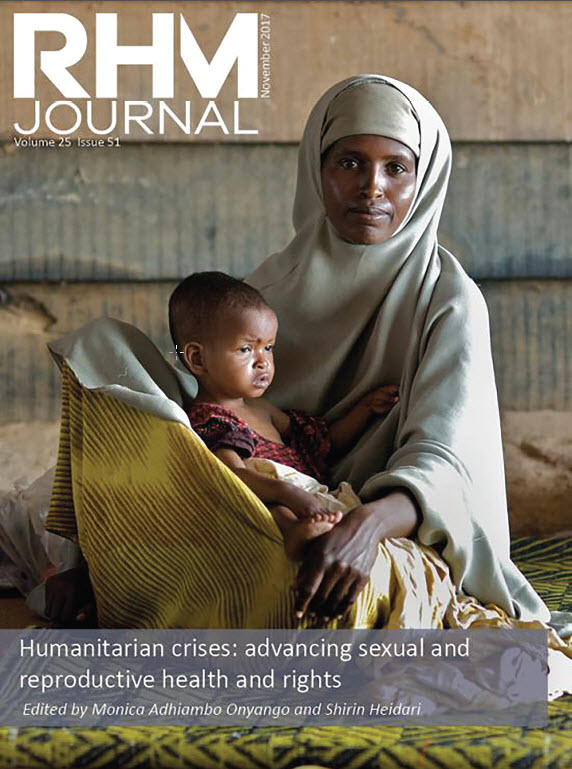Uptake of postabortion care services and acceptance of postabortion contraception in Puntland, Somalia
Unsafe abortion is responsible for at least 9% of all maternal deaths worldwide; however, in humanitarian emergencies where health systems are weak and reproductive health services are often unavailable or disrupted, this figure is higher. In Puntland, Somalia, Save the Children International (SCI) implemented postabortion care (PAC) services to address the issue of high maternal morbidity and mortality due to unsafe abortion. Abortion is explicitly permitted by Somali law to save the life of a woman, but remains a sensitive topic due to religious and social conservatism that exists in the region. Using a multipronged approach focusing on capacity building, assurance of supplies and infrastructure, and community collaboration and mobilisation, the demand for PAC services increased as did the proportion of women who adopted a method of family planning post-abortion. From January 2013 to December 2015, a total of 1111 clients received PAC services at the four SCI-supported health facilities. The number of PAC clients increased from a monthly average of 20 in 2013 to 38 in 2015. During the same period, 98% (1090) of PAC clients were counselled for postabortion contraception, of which 955 (88%) accepted a contraceptive method before leaving the facility, with 30% opting for long-acting reversible contraception. These results show that comprehensive PAC services can be implemented in politically unstable, culturally conservative settings where abortion and modern contraception are sensitive and stigmatised matters among communities, health workers, and policy makers. However, like all humanitarian settings, large unmet needs exist for PAC services in Somalia.
Introduction
Globally, 830 women die every day from preventable causes related to pregnancy and child birth; of these, almost all (99%) occur in low- and middle-income countries.1 Over two thirds of maternal deaths result from direct obstetric causes, such as haemorrhage, hypertensive disorders of pregnancy, sepsis, abortion, and other direct causes.2In sub-Saharan Africa, more than 97% of abortions received by women are unsafe and unsafe abortion is responsible for at least 9% of all maternal deaths with over 1.6 million women hospitalised for complications due to these dangerous procedures each year.3–5 Despite being recognised as a significant contributor to maternal deaths, in 2008, an estimated 3 million women with complications from unsafe abortion were left without care in low- and middle-income countries, often at a huge cost to individuals, communities, and the health system.3,6
Postabortion care (PAC) refers to a package of health facility-based services for complications of spontaneous or induced abortion. The three-component model, attributed to USAID, includes emergency treatment for complications of abortion, including infection, sepsis, haemorrhage, shock, and reproductive tract injuries; family planning counselling and provision of contraceptive methods for the prevention of further unplanned or mistimed pregnancies that may lead to repeat induced abortions; and community awareness and mobilisation around the critical nature of PAC, allowing for important linkages to other reproductive health (RH) services, including gender-based violence and HIV, which are essential to internally displaced person (IDP) populations in humanitarian crises. Although it is known that PAC services can prevent morbidity and mortality from abortion-related complications, access to these lifesaving services is widely unavailable to women across sub-Saharan Africa.8Barriers to access include, but are not limited to, restrictive laws and policies, a lack of understanding of these laws and policies by providers and community members, stigma associated with abortion, negative attitudes of service providers, lack of trained medical personnel, restriction of services to higher level and cadre of care, inadequate supplies and equipment, and lack of integration into the primary health care system.8,9
The situation is worsened in humanitarian settings, where access to general RH services for crisis-affected women is severely limited, often due to non-existent or fractured infrastructure.10–13 The need for RH services is high in conflicts, while the availability is low.14Although significant progress has been made in improving access to RH services for women in humanitarian settings since the International Conference on Population and Development in 1994, gaps in RH services continue to exist for key interventions, such as lifesaving PAC services.15–17 Improving access to PAC, family planning (FP), and other RH services to women in humanitarian settings is a key strategy for preventing maternal mortality and morbidity.
A programmatic evidence base for the feasibility, effectiveness, and quality of PAC services in fragile settings is slim.16 This paper documents strategies, results, and lessons learned from Save the Children International’s (SCI) PAC implementation in Puntland, Somalia. Somali law explicitly allows abortion to save a woman’s life, which allows for PAC. In addition to the restrictive legal environment, Puntland presents a challenging humanitarian context that is coupled with religious and social conservatism that further elevates barriers to improving the availability and accessibility of quality PAC services. This study makes an important contribution to the existing evidence base for the implementation of PAC services in a challenging humanitarian context.
